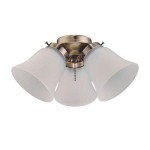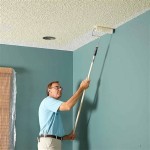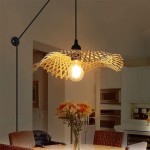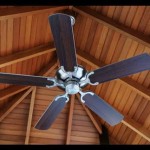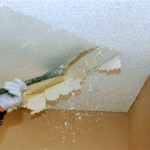Putting Recessed Lighting in Existing Ceiling
Recessed lighting can be a great way to improve the lighting in your home. It can provide a more even distribution of light and can help to create a more inviting atmosphere. If you're thinking about adding recessed lighting to your home, there are a few things you'll need to do first.
### 1. Choose the Right FixturesThe first step is to choose the right recessed light fixtures. There are a few different factors to consider when making your choice, including the size of the room, the height of the ceiling, and the type of bulb you want to use. You'll also need to decide whether you want the fixtures to be dimmable.
### 2. Determine the Location of the LightsOnce you've chosen the fixtures, you'll need to determine where you want to place them. The location of the lights will depend on the size and shape of the room, as well as the amount of light you want. It's a good idea to start by placing the lights in the center of the room and then adjusting their position as needed.
### 3. Cut Holes in the CeilingOnce you know where you want to place the lights, you'll need to cut holes in the ceiling. The size of the holes will depend on the size of the fixtures you've chosen. You can use a drywall saw or a hole saw to cut the holes.
### 4. Install the FixturesOnce the holes are cut, you can install the fixtures. Start by connecting the wires from the fixture to the wires in the ceiling. Then, push the fixture into the hole and secure it in place with the screws provided.
### 5. Test the LightsOnce the fixtures are installed, turn on the lights to make sure they're working properly. If any of the lights are not working, check the connections to make sure they're secure. You may also need to replace the bulb.
### Tips for Installing Recessed LightingHere are a few tips for installing recessed lighting:
*Use a level to make sure the holes are cut straight.
*Be careful not to cut the wires when you're cutting the holes.
*Make sure the fixtures are securely fastened in place.
*Test the lights before you finish the installation.
### Additional ConsiderationsIn addition to the steps outlined above, there are a few other considerations to keep in mind when installing recessed lighting:
*The type of ceiling you have:
Recessed lighting can be installed in most types of ceilings, but there are some exceptions. For example, it's not possible to install recessed lighting in a popcorn ceiling. *The insulation in your ceiling:
If your ceiling is insulated, you'll need to make sure that the recessed lighting fixtures are IC-rated. This means that they are designed to be installed in contact with insulation. *The location of the electrical wires:
When you're cutting the holes for the recessed lighting fixtures, be careful not to cut the electrical wires. If you do, you could damage the electrical system in your home. ### ConclusionInstalling recessed lighting in an existing ceiling can be a challenging project, but it's definitely possible to do it yourself. By following the steps outlined above, you can add recessed lighting to your home and enjoy the benefits of a more evenly distributed and inviting light.

How To Install Recessed Lighting Fixthisbuildthat

8 Recessed Lighting Installation Tips For Diyers Bob Vila

How To Install Led Recessed Lighting In Existing Ceiling Info

How To Install Led Recessed Lighting On High Ceiling A 200 Diy Project Youtube

Energy Star Ask The Experts Products

Installing Recessed Lighting Fine Homebuilding

How To Put Recessed Lights In The Ceiling Hgtv

How To Install Ceiling Light Homeserve Usa

8 Recessed Lighting Installation Tips For Diyers Bob Vila

How Much Does It Cost To Install Recessed Lighting Angi



